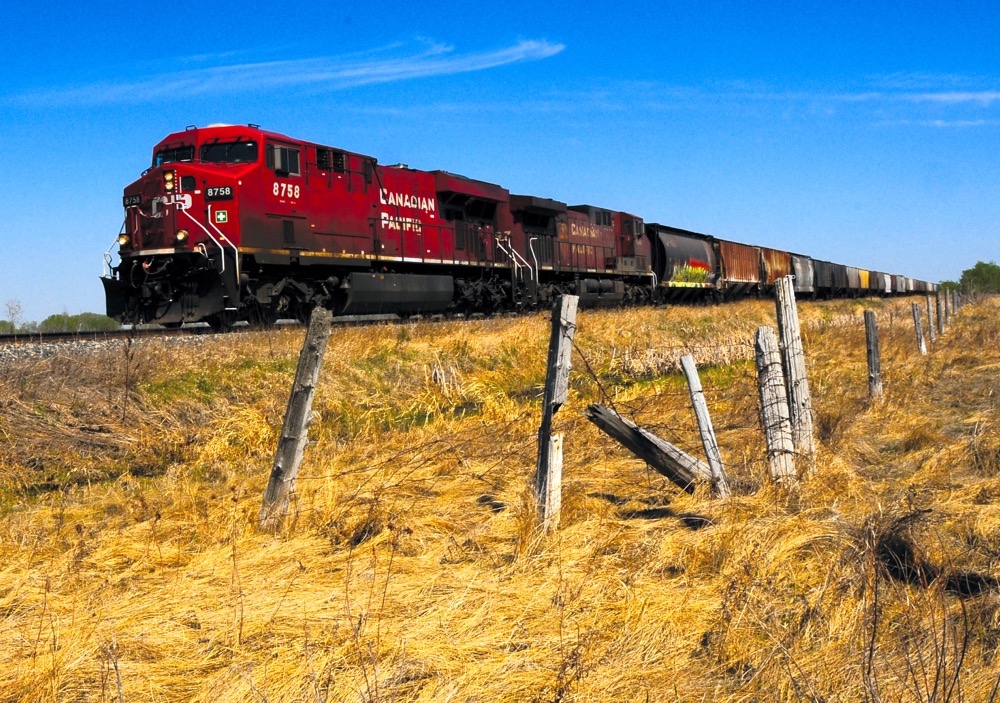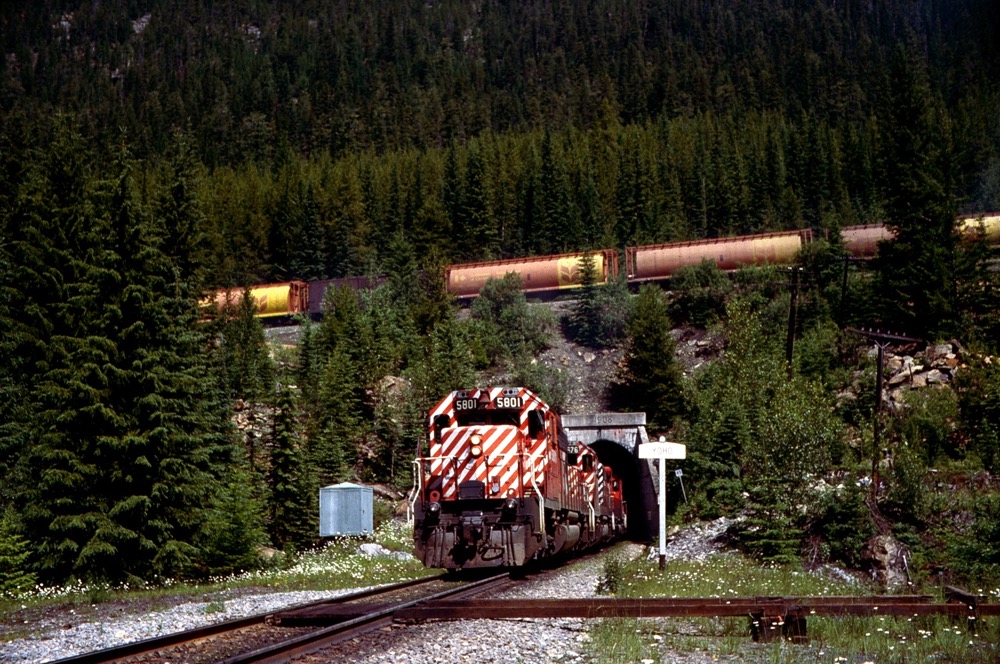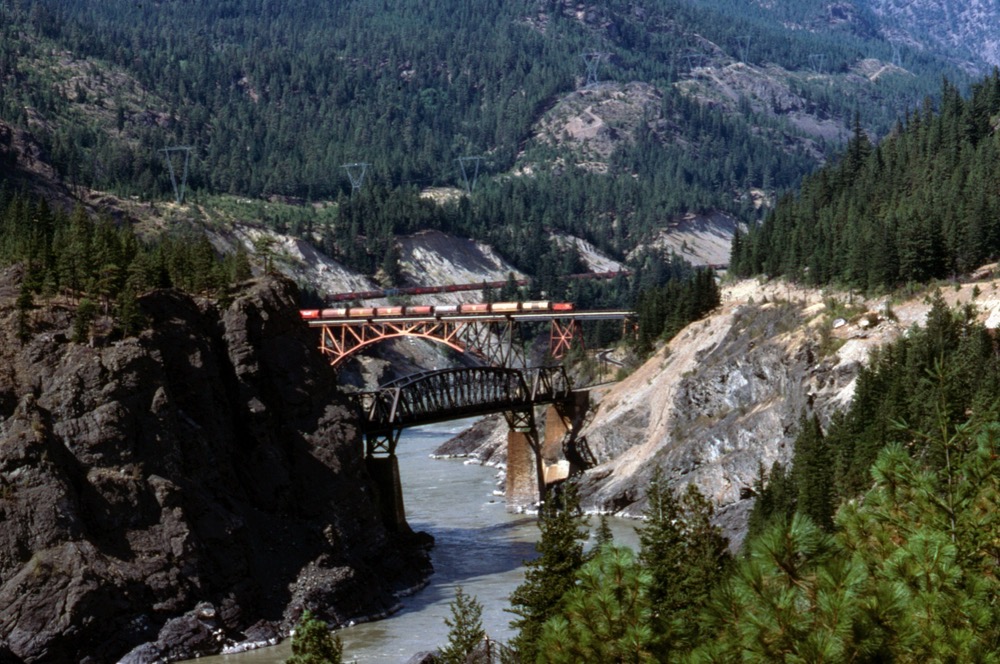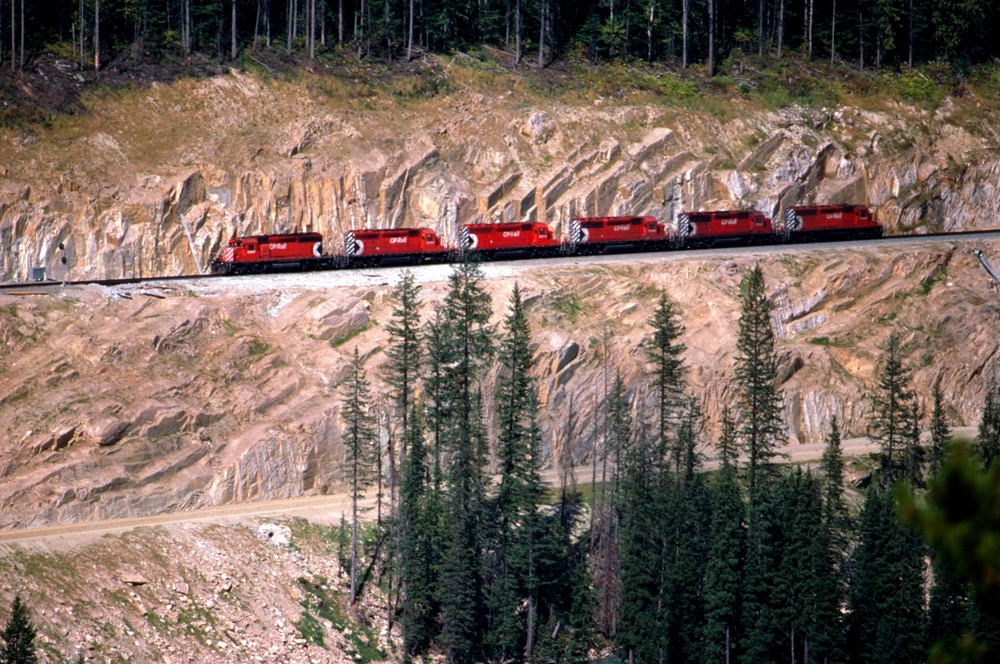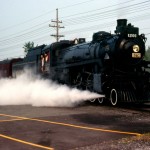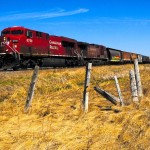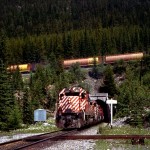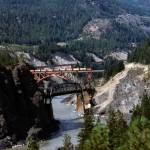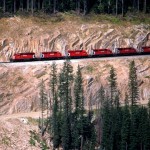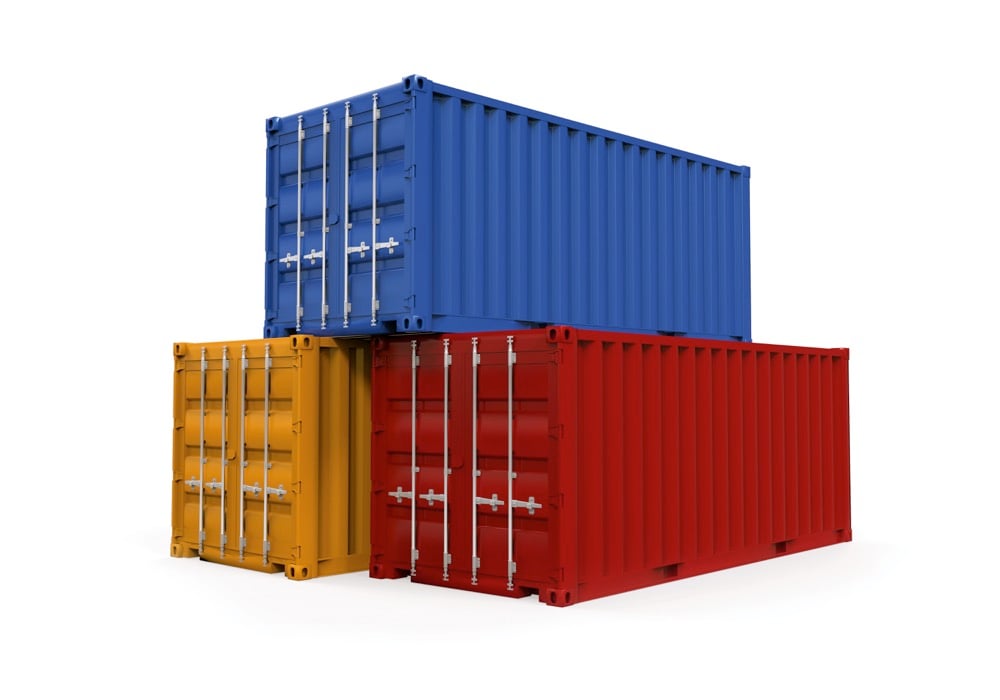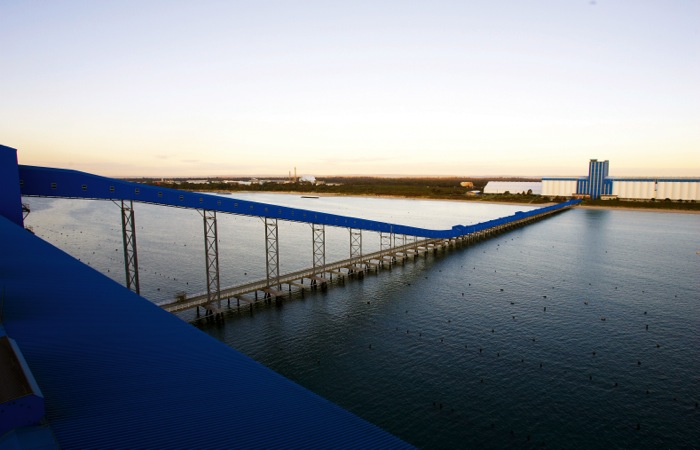
GG 15
The first railway locomotives were steam engines, such as the G5 light Pacific type above, built in 1944 and operated by the Canadian Pacific Railway. Among the last built before diesel, these represent the peak of conventional steam technology.
Photo: Gord Leathers
8758_Drag01
Today’s diesel locomotive is, in fact, a diesel electric, running a generator with current fed to traction motors on the axle. The electric field of the AC motors delivers superior wheel adhesion to the steel track, enhancing pulling power.
Photo: Gord Leathers
GG 02_spiral_tunnel_5801
An engineering tour-de-force, the Spiral Tunnels east of Field, B.C., are a way to drop a train close to 1,200 feet over a distance of about 11 miles. The original grade did a straight drop, too steep and too dangerous for safe railway operation, so the solution was to drill two corkscrew tunnels. That made the trip down almost four miles longer but only half as steep. This tunnel is the lower tunnel, drilled through Mount Ogden, and the locomotives emerging are pulling the hopper cars over top. The higher tunnel is on the other side of the valley in Cathedral Mountain.
Photo: Gord Leathers
GG 10_Cisco_Flats_fraserRiver
The Cisco Bridges: Nowhere is the challenge more evident than at the two bridges across the Fraser at Cisco Flats, where the CP crosses the Fraser and then goes right into a tunnel. Tunnels and bridges are expensive so surveyors and engineers avoid them if they can.
Photo: Gord Leathers
GG 09
Rogers Pass: A logistical bottleneck on the CPR is the fearsome climb up the eastern slope to the summit of Rogers Pass in the Selkirk Range. There’s a sustained grade of 2.2 per cent over a distance of 22 miles, which necessitates low speeds and reduced capacity. The initial solution was to keep a fleet of locomotives at Beavermouth as additional pushers. A westbound freight would stop and six SD40 diesels would be spliced in, and a long slow grind up to the summit requiring the brute force of up to 12 SD40 diesels would commence. In 1984 the Mount MacDonald Tunnel was drilled. The new route cut an additional 280 feet off the climb and reduced the eastern grade from 2.2 to a much more agreeable one per cent.
Photo: Gord Leathers
Canada created a rail system that in turn created the country, and keeps creating the West today. If it too rarely gets called one of the wonders of the world, that only shows how poorly we understand it.

